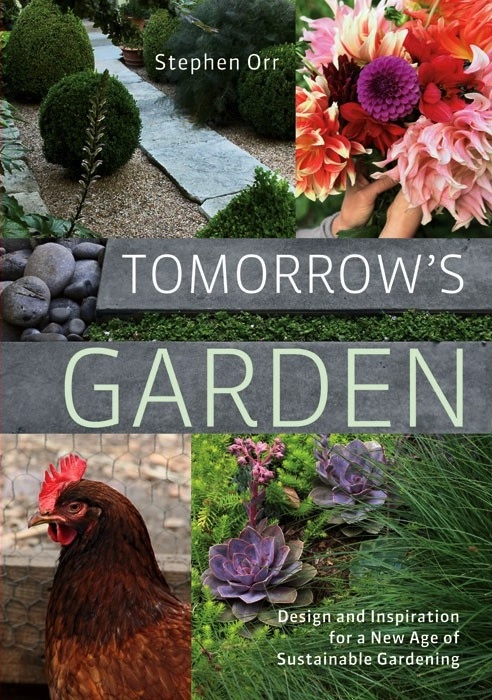Tomorrow’s Garden: Design and Inspiration for a New Age of Sustainable Gardening, Stephen Orr, Rodale Press, Emmaus, PA (Feb. 15, 2011); 256 pp, hardcover; publisher's price: $24.99; Amazon price: $16.49.
Tomorrow’s Garden is a book that presents the moral best that a garden and gardening can be: site and climate sensitive, organic, not conforming to wasteful traditions, scrupulous in its use of natural resources, or — to sum it up — responsible.
In the introduction, “The Education of a Responsible Gardener,” the author describes his metamorphosis from an “eco-biologically naïve” garden lover to a gardener “with a conscience.” He came to responsibility through his own gardening experiences and through the gardens he visited and studied in his career as a garden magazine editor.
Presenting outstanding examples of current gardens, the book is divided into three sections. The title of Part 1, “Garden Where You Live,” can be taken two ways. First, of course, garden with plants, whether native or exotic, which are suited to the climate and conditions of your site. But, second, you really can live in your garden. You can eat, entertain, read, work, or even start a business there.
In Part 2, “Consider the Materials,” Orr states: “One of the common denominators of a modern garden style is the absence of turf.” Orr explores the alternatives of stone and gravel — particularly appropriate in California and the Southwest — in the garden. No matter in what part of the country it is used, gravel has a “reductive quality” that functions as a “blank canvas” against which plants are accentuated. Best of all, its porosity prevents runoff.
If one really must have turf, the author recommends “the intentional lawn,” one that has been reduced “to a smaller area that is intentional and purposeful.”
Part 3, “Edible Gardens and Community,” documents the trend in vegetable gardening, both at home and in community gardens (lurking here, the idea of a “decentralized” food supply, crucial in times of catastrophe), the hipness of raising livestock in the suburbs and the city, and making use of street-side plots of land.
All in all, it’s a pretty book with lots of ideas and the bright hope that tomorrow might actually bring change to the wasteland that is most American landscapes.
Carole Ottesen is a member of the Potomac Valley Chapter. She edits for The American Gardener Magazine and is the author of The New American Garden, Ornamental Grasses: The Amber Wave, The Herbal Epicure: Growing, Harvesting and Cooking Healing Herbs, A Guide to Smithsonian Gardens, and Native Plant Primer.

